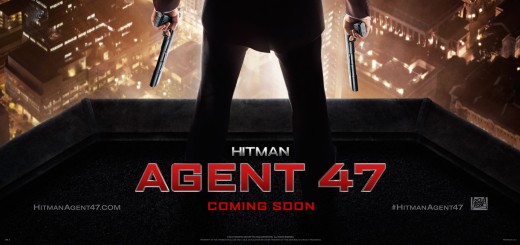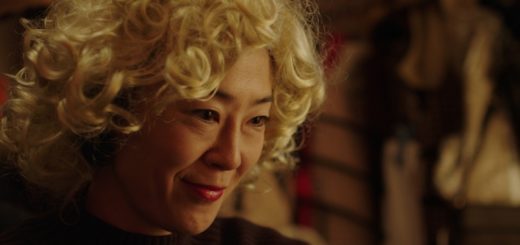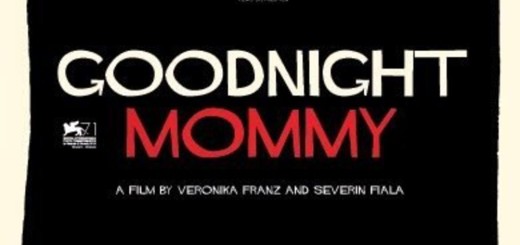GREEN ROOM Review
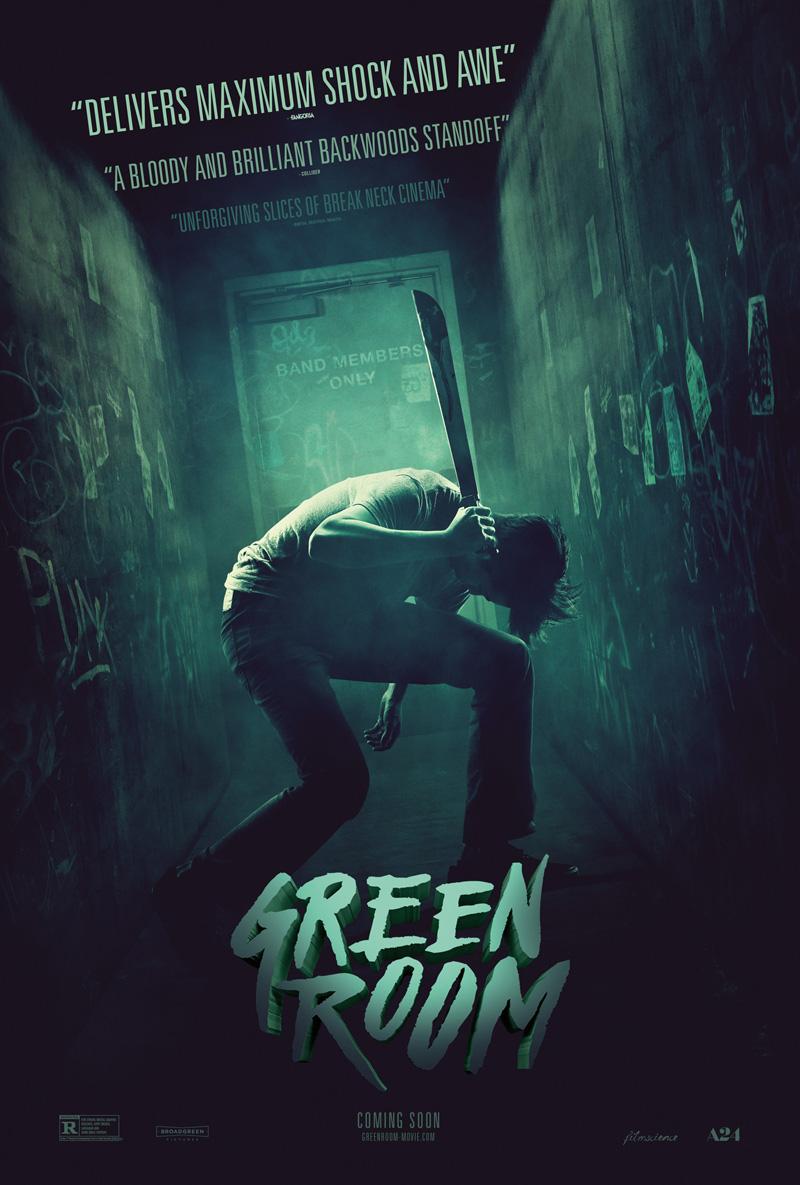
Director: Jeremy Saulnier
Genre: Thriller
Year: 2016
Jeremy Saulnier seems determined to become the new face of the horror thriller. While most directors will turn to supernatural monsters or deranged murderers to frighten their audiences, Saulnier is willing and able to use the ordinary to terrifying effect. It’s the grim plausibility of his films that makes them so scary, and the thought that this could happen to you makes his violence much more horrific than your average action fare. 2013’s BLUE RUIN took a look at the impoverished underbelly of America that we drive by every day but never pay much mind to, and Saulnier’s latest work, GREEN ROOM, continues the trend by setting its sights on the not-so-underworld of white supremacy. The film ran the festival circuit last year, but only recently saw a wide release.
GREEN ROOM follows a punk band that’s fallen on hard times travelling through Oregon, whose most recent gig sees them playing at a remote skinhead bar. After their set, they stumble upon a murder, and the Nazi owners immediately try to silence them as witnesses. Trapped in their green room, the band has to improvise a plan to fight their way out and survive the night. In the process, a whole lotta people pay the piper’s fee.
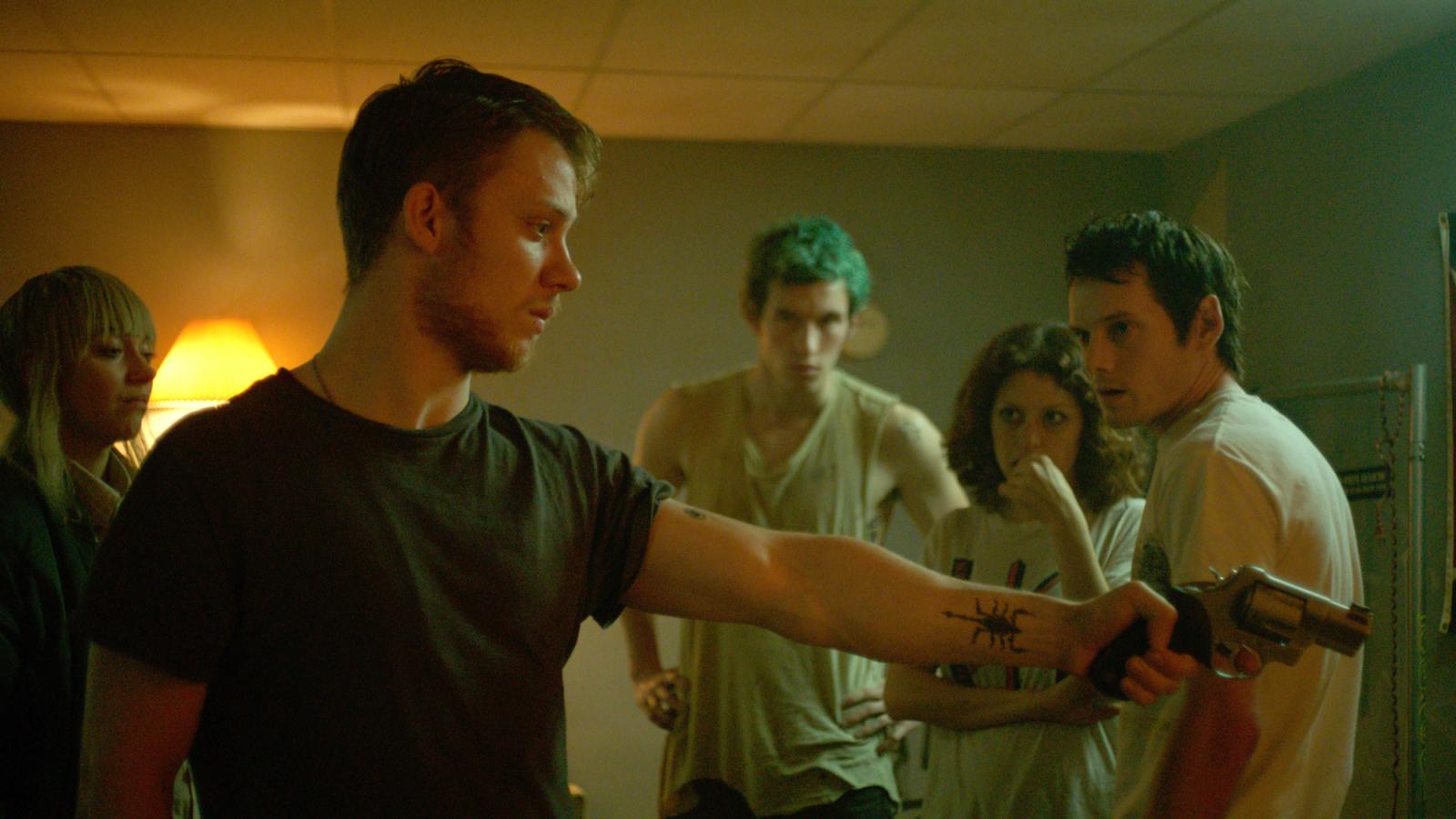
“ARE YOU EDGE ENOUGH, BRO???”
As far as the premise goes, it’s pretty reserved by Hollywood standards, and I’m sure many will praise GREEN ROOM for being a narratively economical work. Be that as it may, GREEN ROOM is a grander production than BLUE RUIN in every department by several degrees of magnitude. Where his previous film was the model of independent cinema, Saulnier has now firmly crossed the threshold into big name filmmaking with his new release, complete with a star-powered cast, elaborate production design, and a far more complex script. This isn’t necessarily praise for GREEN ROOM, nor is it an accusation of betrayal. In reality, the expanded scope helps the film as much as it hinders it.
Anton Yelchin does an admirable job portraying the band’s front man, whose confidence quickly dissolves in the face of violence. He’s assisted mainly by his bandmate, ARRESTED DEVELOPMENT’s Alia Shawkat, as well Imogen Poots as a third party witness trapped alongside them. Patrick Stewart stars opposite as the nazi bar’s owner in a rather convenient casting of the Federation captain’s famous chrome dome. Unfortunately, a script that is barren of character development hamstrings most of these performances. Both the female leads can easily be summed up as “tough women who don’t take shit,” and they aren’t allowed to stray too far from these narrow personas. Stewart, arguably one of GREEN ROOM’s strongest selling points, has very little to do other than order henchman around.
The truth is Saulnier’s dedication to realizing his vision gets in the way of his film’s pacing. Like BLUE RUIN, GREEN ROOM’s cast is meant to be sympathized with by the perils of their situation, not the merits of their character. Yet this film features far more introspection with just as little development and no satisfying arcs. In the end, no amount of Hollywood stars can compensate for that. Ironically, it’s BLUE RUIN alum Macon Blair as the bar’s manager that steals the show, offering an unhinged rationality that clashes brilliantly with his more brutal comrades. Additionally, the film tries dabbling in exploitation by pitting punk musicians against neo nazi extremists, but the bad guys’ psuedo-political affiliations appear to function as little more than window dressing, a cheap means of getting the audience to root against an already detestable group of antagonists.
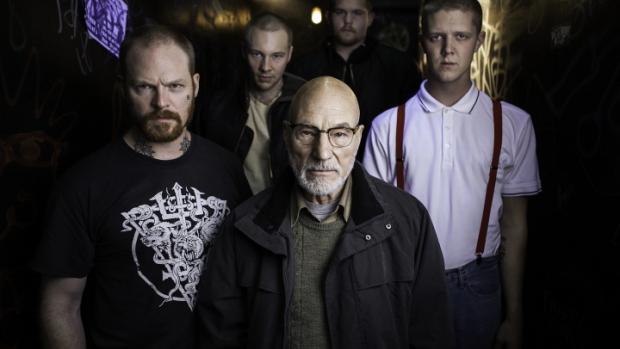
“These are the voyages of the skinhead enterprise, to baldly go where no white men have gone before”
Though GREEN ROOM’s villains were designed to be as artificially unlikable as possible, there’s no denying that they are scary. These are not otherworldly terrors or psychopaths, but instead a very real threat living in our country. With a gang-affiliated murder, staged deaths, contract killers, and a heroin operation, GREEN ROOM is by every definition a crime film on paper. But Saulnier is able to inject a sensation of horror through the helplessness of his victims that elevates it beyond that subgenre and into something quite different. Yes, the skinheads could just as easily be militant Pastafarians with no change to the plot, but the fact that their identity only augments GREEN ROOM’s verisimilitude ends up justifying their presence.
Still, GREEN ROOM seeks to thrill before pontificate, and thrill it does. The film does a great job building tension as the band members contemplate their situation, waiting for when the violence will actually break out. And boy, is this movie violent. The gore is more gruesome than most films out there, but again, it does this through its believability, not excess. There are no spinning fan blades, pneumatic crushers, or exploding heads here. Rather, GREEN ROOM dispatches its players by fairly mundane means; box cutters, shelving rods, and angry dogs end up creating more shocking scenes than any SAW movie. Characters die suddenly and without ceremony, followed by lulls in the action while both sides regroup. The long, methodical takes during these scenes augment the suspense, making the audience uncertain of when the next terrible fate will come to pass.
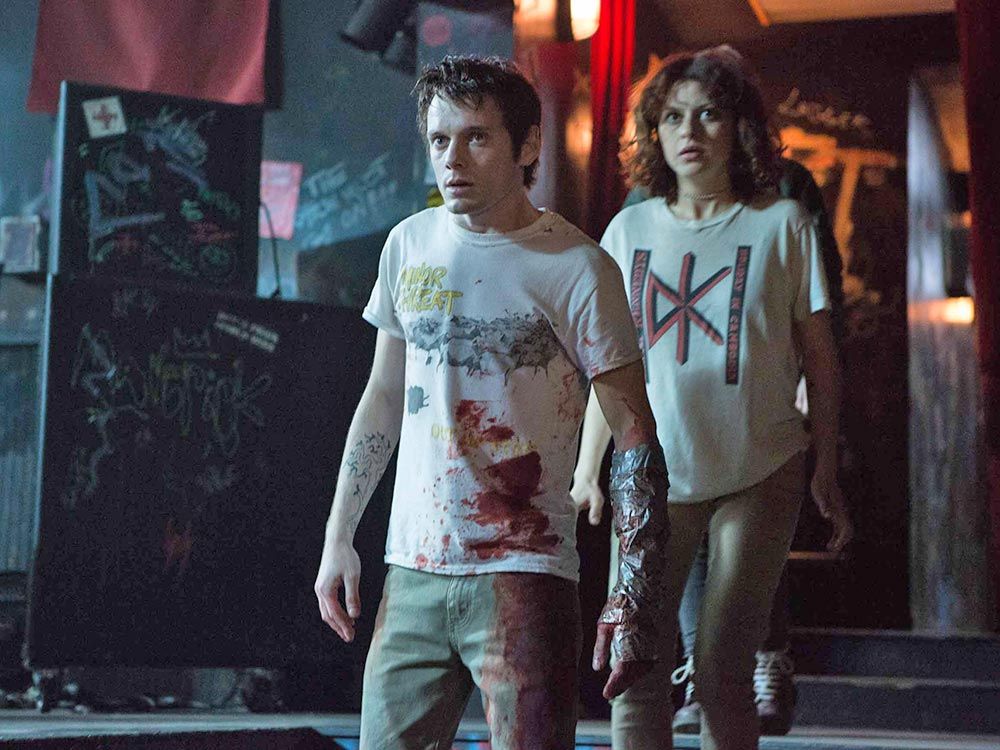
Next on Saulnier’s list: fiberglass splinters, lead poisoning, and death by papercuts
GREEN ROOM is the trademark ambitious follow-up. It’s bigger than its predecessor, but it’s also bigger than it has to be. A lot of talent goes to waste, and the various plot threads at times become too overwhelming for what is supposed to be simple revenge fantasy. In the end, though, GREEN ROOM delivers on the thrills promised on the tin. It’s not a better film than BLUE RUIN, but it’s still pretty damn good. Maybe not the best date movie, but an excellent choice for a Friday night, and a must see for anyone calling themselves a fan of the genre.
Verdict: Recommend

